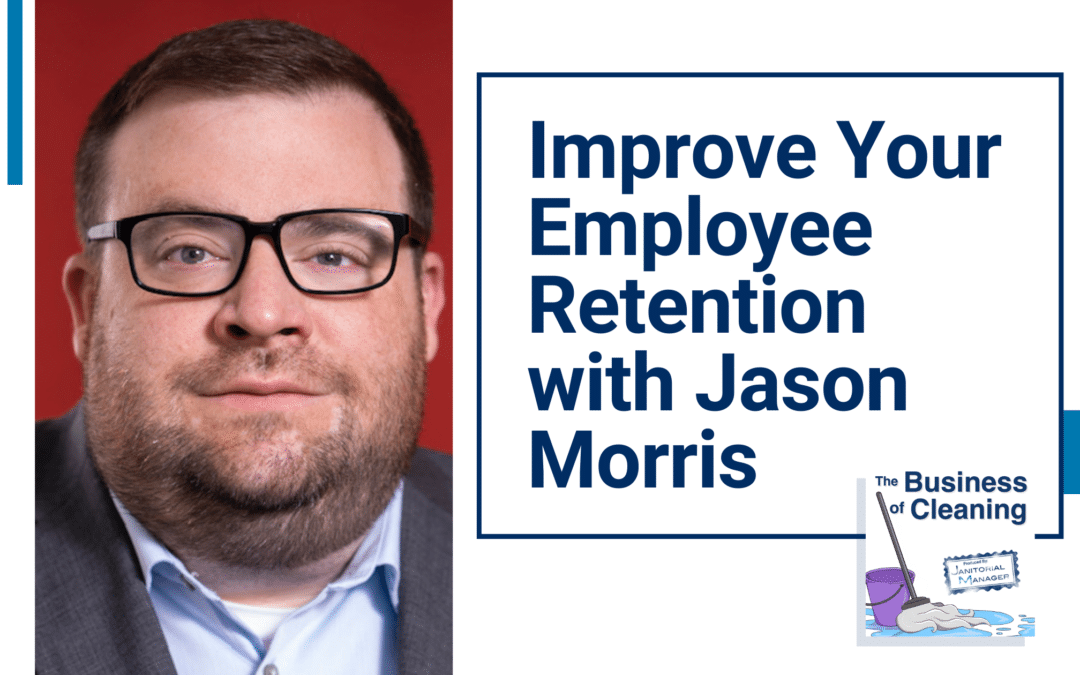Audio Version
Podcast Transcription
Video Version
It can be hard to find qualified applicants, but it can be even harder to keep them. If you found a valuable employee then you know that they have the potential to be hired elsewhere. The real talent comes in retaining your employees and we sat down with the perfect person to talk about doing exactly that.
What is Retention Really?
Many companies misinterpret their retention efforts as being the questions asked during the exit interview and sometimes implementing changes based on the answers they receive. However, as Jason said, if the first time you know someone is leaving is during the exit interview then you’ve done something wrong.
The true success of retaining employees is in the second home that you grant them and the comfort and satisfaction they take from. After all, you spend just as much time if not work at work as you do in your own home, so an unhappy employee is one that will leave. The act is increasing a high level of employee retention in everything that you do from even before you post the job throughout the entire time they work for you, even after they’ve left sometimes. After all, some people will return to a company just because they like the people there.
Before You Recruit
You may not think about how long you’re going to keep your new hire before you even create a job description, but you absolutely need to. You have to decide what kind of person you want to abstract that will be a good fit for the job and the company.
So, before you even start recruiting, you must understand your company culture and your mission. You should also understand what kind of work you’ll be asking the individual or individuals to do. Not everyone can do the rigorous and demanding work day after day that is required in a cleaning job, nor will everyone fit well with your team or care about what you’re doing.
Before You Hire
First, stop thinking about any of your positions as fillable with “just a warm body.” Just because you can hire someone for a role and they’re willing to work when they sign the offer, doesn’t mean you should.
In order to retain someone, the offer has to be a good match for them or it could cause more problems for you in the long run, especially if the employee is not suited to long days of the type of work you do. Offering someone a job if they’re not suited for or do not fit the company culture sets them up for failure. Ultimately you hire them to eventually quit.
One way to really assure a fit is to take them out to meet the team and see where they would be working. The applicant then has a chance to see the job they would have.
There’s a tendency to overhype positions or gloss over some details of it in order to get someone in the door or to lure people into applying who wouldn’t normally apply. However, misleading an applicant who then accepts the positions can lead to a very disappointed and unhappy employee.
Lastly, make sure that your compensation and policies support the employee. If you have policies and procedures that do nothing but create red tape or obstacles for the employee then they’ll feel that and the lack of trust you have for them. Also, be truly flexible with your employees. Understand that they have hardships and difficulties that you can’t see, especially outside of work, that affects what they do every day. Offer resources and support and make sure that your benefits are truly comprehensive.
Their First Days
Everyone’s first day in a new position is overwhelming to some degree. As an employer, it is your job to make it easier and that they have someone there to assist them. Some throw their employees “into the fire,” and others use training methods meant to weed out those they don’t feel actually make the cut.
The “into the fire” method is common, especially in companies that don’t know how or don’t feel that they need to create any sort of training program. Others feel that it’s the same as hands-on training. No matter what your reasoning, the “into the fire” method or simply setting an employee to a job with little to no guidance only overwhelms them more and increases the chances that they’ll fail (and either leave or be fired when it’s not their fault).
Overly difficult training that is meant to “weed out” those not strong enough is also not a great idea. Not everyone has the same learning style or pace. You’re also not the military. Weeding people out is unnecessary, creates undue stress, and will set many up for failure unnecessarily. If you need to “weed people out,” it’s because you’re not doing your job during the interviewing stage to determine fit.
Throughout Their Employment
Just because your employee is trained and doing their job well, doesn’t mean your responsibility to them ends. It also doesn’t mean that they’ll stay forever. Having an employee is cultivating a relationship that is mutually beneficial with that person.
In fact, even if you have a really low turnover rate your work isn’t done. Retention is an ongoing effort both in regards to the individual employee and for the company.
You need to ensure that there are open lines of communication, that you’re as transparent as possible with your teams, and that your team members feel comfortable coming to you too, with both ideas and problems. Of course, cultivating a culture that supports trust and communication is also necessary.
You should ensure that when feedback or ideas are generated by employees that you’re communicating the decision and reasoning for that, whatever they may be. You should also include the employees in decision-making wherever possible as well, especially when it directly concerns their job.
Are you considering new processes, products, or technology? Who’s going to be affected by that? Bring them into the discussion and seriously consider what they have to say. They will be able to predict the impact and effectiveness sometimes better than you can.
Communicate with employees about their performance, your expectations for them, and theirs of the company and the job. Annually and bi-annually performance reviews shouldn’t come with shocking information. This also means acknowledging and supporting your employee’s accomplishments as well. If they’re doing a good job, tell them. Say thank you.
When They Leave
If the first time you know your employee is leaving is when they walk out the door, you’re doing something wrong.
Yes, do your exit interview, but if you’re doing everything you should be to connect to your staff, then you’ll know before they leave that they’re going. You also won’t see as many employees walk out the door and it likely won’t end on a bitter note.
However, if this does happen, take what the employee has to say seriously. Identify your areas of growth and actively begin working on them. Sometimes there are unforeseen life circumstances, but sometimes it’s one of your managers, your expectations, or something else that you can impact in a better way going forward.
About Our Guest:

Jason Morris
Executive Director of HR at Owens Community College
We brought Jason on to talk about a large sticking point for many cleaning businesses and that is employee retention. Right now, when recruiting is harder than ever, keeping the quality employees you have is even more vital.

